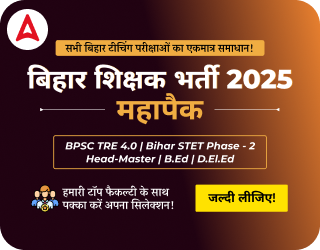Environmental Studies is a comprehensive field that encompasses various branches of science, such as chemistry, physical science, life science, agriculture, health, and sanitary engineering. This intriguing subject plays a significant role in CTET and other State TET Exams, featuring 30 questions. The Environmental Science section in these exams is divided into two parts: Subject Content, accounting for 15 marks, and EVS Pedagogy, also worth 15 marks. To excel in the CTET Exam, it is recommended to study the NCERT books from classes 1 to 8 thoroughly. In this article, we will provide an introductory overview of EVS Pedagogy to aid your preparation.
CONTINUOUS AND COMPREHENSIVE EVALUATION
Continuous and Comprehensive Evaluation (CCE) refers to a system of school based on evaluation of a student that covers all aspects of a student development. It is a developmental process of student, which emphasizes on two fold objectives.
• These objectives are continuity in evaluation and assessment of broad based learning and behavioral outcomes on the other.
• The term continuous is meant to emphasize that evaluation of identified aspects of students growth and development’ is a continuous process rather than an event, built into the total teaching – learning process and spread over the entire span of academic session.
• The second term comprehensive means that the scheme attempts to cover both the scholastic and the co – scholastic aspects of the students’ growth and development.
• Since abilities, attitudes and aptitudes can manifest themselves in forms other than the written word, the term refers to application of variety of tools and techniques (both testing and non – testing) and aims at assessing a learner’s development in areas of learning, like
1. Knowledge
2. Understanding
3. Applying
4. Analyzing
5. Evaluating
6. Creating
• Continuous evaluation helps in bringing awareness of the achievement to the child, teachers and parents from time to time. They can look into the probable cause of the fall in performance if any and may take remedial measures of instruction in which more emphasis is required.
• CCE uses assessment as a means of motivating learners to provide feedback and follow up work to improve upon the learning in the classroom and to present a comprehensive picture of a learner’s profile.
1. Objectives of CCE:
• To help develop cognitive, psychomotor and affective skills. To lay emphasis on thought process and de – emphasize memorization.
• To make evaluation an integral part of teaching – learning process.
• To use evaluation for improvement of students’ achievement and teaching – learning strategies on the basis of regular diagnosis followed by remedial instructions.
• To use evaluation as a quality control device to maintain desired standard of performance.
• To determine social utility, desirability or effectiveness of a programme and take appropriate decisions about the learner, the process of learning and the learning environment.
• To make the process of teaching and learning a learner – centered activity.
2. Features of CCE:
• The continuous aspect of CCE takes care of continual and periodicity aspect of evaluation. Continuous means assessment of students in the beginning of instructions (placement evaluation) and assessment during the instructional process (formative evaluation) done informally using multiple techniques of evaluation.
• Periodicity means assessment of performance done frequently at the end of unit/term (summative evaluation).
• The comprehensive component of CCE takes care of assessment of all round development of the child’s personality. It includes assessment in scholastic as well as co – scholastic aspects of the pupil’s growth.
• Scholastic aspects include curricular areas or subject specific areas, where as co – scholastic aspects include life skills, co – curricular activities, attitudes and values.
• Assessment in scholastic areas is done informally and formally using multiple techniques of evaluation continually and periodically. The diagnostic evaluation takes place at the end of unit/term test.
• Assessment in co – scholastic areas is done using multiple techniques on the basis of identified criteria, while assessment in life skills is done on the basis of indicators of assessment and checklists.
3. Functions of CCE:
• It helps the teacher to organize effective teaching strategies.
• Continuous evaluation helps in regular assessment to the extent and degree of learner’s progress (ability and achievement with reference to specific scholastic and co – scholastic areas).
• Continuous evaluation serves to diagnose weaknesses and permits the teacher to ascertain certain individual learner’s strengths and weaknesses and her needs. It provides immediate feedback to the teacher.
• By continuous evaluation, children can know their strengths and weaknesses. It provides the child a realistic self – assessment of how they studies.
• It can motivate children to develop good study habits, to correct errors and to direct their activities towards the achievement of desired goals. It helps a learner to determine the areas of instruction in where more emphasis is required.
• Continuous and comprehensive evaluation identifies areas of aptitude and interest. It helps in identifying changes in attitudes and value systems.
• It helps in making decisions for the future, regarding choice of subjects, courses and careers.
• It provides information/reports on the progress of students in scholastic and co – scholastic areas and thus helps in predicting the future success of the learner.
(2.) Aspects of CCE:
I. SCHOLASTIC ASSESSMENT
The objectives of the scholastic domain are:
• Desirable behavior related to the learner’s knowledge, understanding, application, evaluation, analysis and the ability to apply it in an unfamiliar situation.
• To improve the teaching learning process.
• Assessment should be both Formative and Summative.
(A) Formative Assessment:
• It is a tool used by the teacher to continuously monitor student progress in a non – threatening, supportive environment.
• It involves regular descriptive feedback, a chance for the student to reflect on the performance, take advice and improve upon it.
• It involves the students’ being an essential part of assessment from designing criteria of assessing self of peers. If used effectively, it can improve student performance tremendously while raising the self – esteem of the child and reducing the work load of the teacher.
• Formative assessment is carried out during a course of instruction for providing continuous feedback to both the teachers and the learners.
• It is also carried out for taking decisions regarding appropriate modification in the transactional procedures and learning activities.
Features of Formative Assessment:
(i) It is diagnostic and remedial.
(ii) Makes provision for effective feedback.
(iii) Provides a platform for the active involvement of students in their own learning
(iv) Enables teachers to adjust teaching to take account of the results of assessment.
(v) Recognizes the profound influence assessment has on the motivation and self – esteem of students, both of which are crucial influences on learning.
(vi) Recognizes the need for students to be able to assess themselves and understand how to improve.
(vii) Builds on students’ prior knowledge and experience in designing what is taught.
(viii) Incorporates varied learning styles to decide how and what to teach.
(ix) Encourages students to understand the criteria that will be used to judge their work.
(x) Offers an opportunity to students to improve their work after they get the feedback.
(xi) Helps students to support their peer groups and vice – versa.
(B) Summative Assessment:
• Summative assessment is carried out at the end of a course of learning. It measures or sums – up how much a student has learned from the course. It is usually a graded test, i.e.
• It is marked according to a scale or set of grades.
• Assessment that is pre – dominantly of summative nature will not by itself be able to yield a valid measure of the growth and development of the student.
• Over – emphasis on examination marks that focuses on only scholastic aspects in turn makes student assume that assessment is different from learning, resulting in the “learn and forget syndrome.
• Besides encouraging unhealthy competition, the over – emphasis on summative assessment system also produces enormous stress and anxiety among the learners.
Features of Summative Assessment
(i) Assessment of learning.
(ii) Generally, students at the end of a unit or semester to demonstrate the sum of what they have or have not learned.
(iii) Summative assessment methods are the most traditional way of evaluating student work.
II. CO – SCHOLASTIC ASSESSMENT:
The desirable behavior related to learner’s life skills, attitudes, interests, values, co – curricular activities and physical health are described as skills to be acquired in co – scholastic domain. The process of assessing the students’ progress in achieving objectives related to scholastic and co – scholastic domain is called comprehensive evaluation.
School based continuous and comprehensive evaluation system should be established to-
• reduce stress on children.
• make evaluation comprehensive and regular,
• provide space for the teacher for creative teaching
• provide a tool of diagnosis and remedial action.
• produce learners with greater skills.
Aim of School Based CCE:
• Elimination of chance element and subjectivity (as far as possible). De-emphasis on memorization, encouraging comprehensive evaluation incorporating both scholastic and co – scholastic aspects of learners’ development.
• Continuous evaluation spread over the total span of the instructional time as an integral built – in aspect of the total teaching – learning process.
• Functional and meaningful declaration of results for effective use by teachers, students, parents and the society.
• Wider uses of test results for purposes not merely of the assessment of levels of pupils’ achievements and proficiencies, but mainly for their improvement, thorough diagnosis and remedial enrichment programmes.
• Improvement in the mechanics of conducting examinations for realizing a number of other allied purposes. Introduction of concomitant changes in instructional materials and methodology.
• Introduction of the semester system.
• The use of grades in place of marks in determining and declaring the level of pupil performance and proficiency.
Characteristics of School Based CCE:
• School based evaluation has the following characteristics
• It is broader, more comprehensive and continuous than traditional system.
• Aims primarily to help learners for systematic learning and development.
• Takes care of the needs of the learner as responsible citizens of the future.
It is more transparent, futuristic and provides more scope for association among learners, teachers and parents. School based evaluation provides opportunities to teachers to know the following about their learners.
• What they learn?
• How they learn?
• What type of difficulties limitations they face in working in tandem?
• What do the children think?
• What do the children feel?
• What are their interests and dispositions?
There is a paradigm shift in the pedagogy and competencies from controlling’ to ‘enriching’ to ’empowering’ schools.
A. Assessment Paradigms:
1. Assessment of Learning: The assessment of learning is defined as a process whereby someone attempts to describe and quantify the knowledge, attitudes or skills possessed by another. Teacher direction is paramount and the student has little involvement in the design or implementation of the assessment process in these circumstances.
• Teacher designs learning
• Teacher collects evidence.
2. Assessment for Previous Knowledge: The assessment for learning involves increased level of student autonomy, but not without teacher guidance and collaboration. The assessment for learning is sometimes seen as being a kin to ‘formative assessment. There is more emphasis towards giving useful advice to the student and less emphasis on the giving of marks and the grading function.
• Teacher designs learning.
• Teacher designs assessment with feedback to student.
3. Assessment as Learning: The assessment as learning is perhaps more connected with diagnostic assessment and can be constructed with more of an emphasis on peer learning. Assessment as learning generates opportunities for self – assessment and peer assessment. Students take on increased responsibility to generate quality information about their learning and that of others.
• Teacher and student co – construct learning.
• Teacher and student co – construct assessment.
• Teacher and student co – construct learning progress map.
Assessment for learning and assessment as learning activities should be deeply embedded in teaching and learning and be the source of interactive feedback, allowing students to adjust, re – think and re – learn.
4. Assessment in Learning: The assessment in learning places the question at the centre of teaching and learning. It deflects the teaching from its focus on a correct answer to a focus on a fertile question. Through enquiry students engage in processes that generates feedback about their learning, which come from multiple sources and activities. It contributes to the construction of other learning activities, line of enquiry and the generation of other questions.
• Student as the centre of learning.
• Student monitors, assesses and reflects on learning.
• Student initiates demonstration of learning (to self and others)
• Teacher as coach and mentor.
Teachers and students need to understand the purpose of each assessment strategy. The overall assessment package being used by learners and teachers should accurately capture, generate and use meaningful learning information to generate deep learning and understanding.
Download Continuous And Comprehensive Evaluation (CCE) Study Notes PDF




 Phases of Teaching - Stages of Teaching ...
Phases of Teaching - Stages of Teaching ...
 स्वर व व्यंजन - �...
स्वर व व्यंजन - �...
 UP TGT Sanskrit Syllabus and Exam Patter...
UP TGT Sanskrit Syllabus and Exam Patter...




